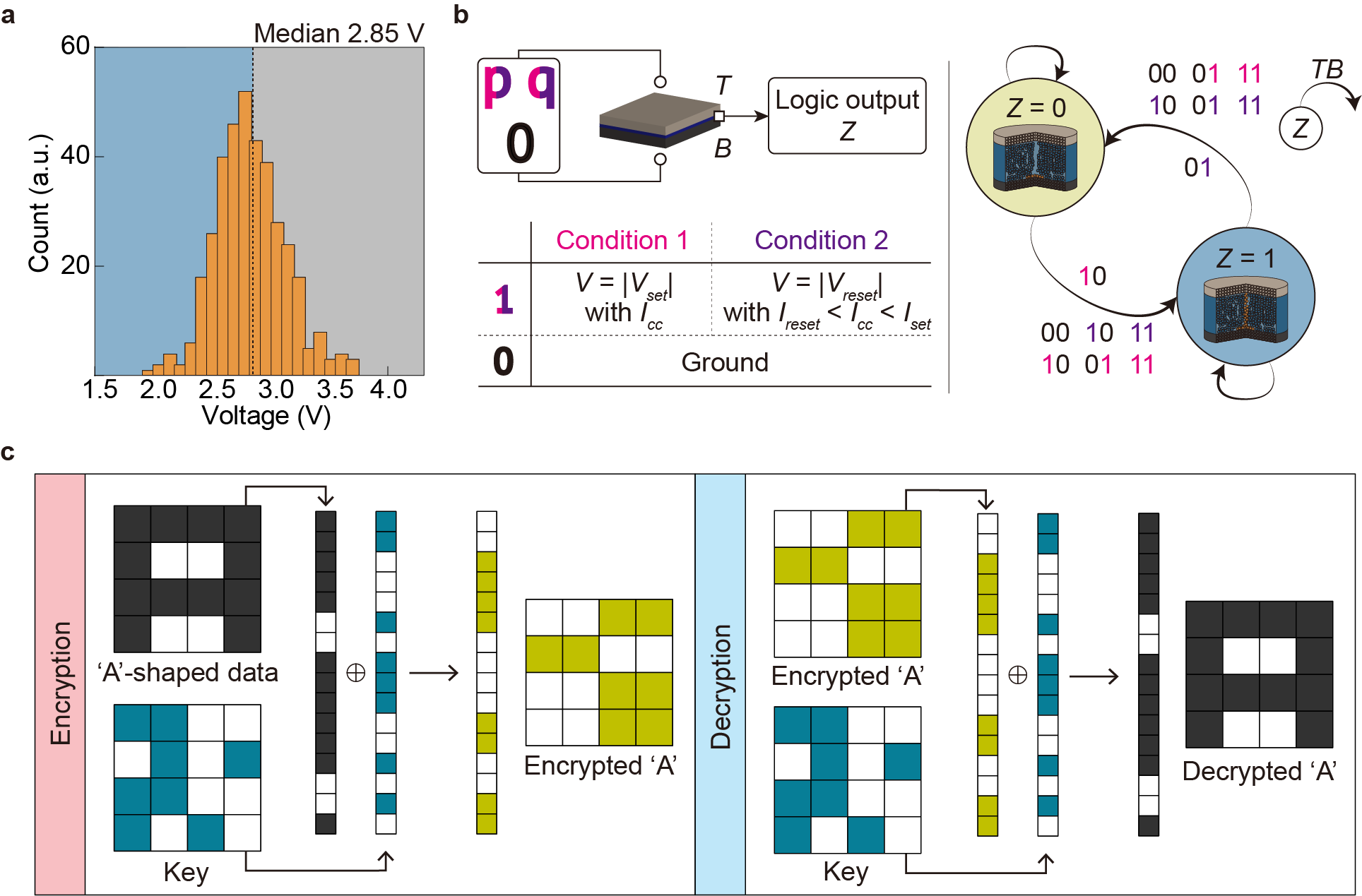Tunable memristors for encryption and computing
Published in Electrical & Electronic Engineering and Materials

With the exponential growth in the volume of data processing in the big data era, information security and computing have become critical issues. There have been various works on memristor-based security and computing applications, but all these implementations are limited to their specific roles and have not fully harnessed the complete advantages of the memristor. This is due to their contrasting requirements – security requires unpredictability, while computing requires predictability. We demonstrated a multifunctional hardware system in a memristor crossbar architecture that integrates memory, security and computing capabilities using Cu0.3Te0.7/HfO2 (CuTeHO) ion-migration-driven memristors.
By exploiting the intrinsic stochastic switching variation of the device, we fabricated a 4 × 4 memristive crossbar to demonstrate physically unclonable functions (PUFs), offering both reconfigurability and concealability. PUF can be used for cryptographic keys for encrypting private data. Each PUF has a unique output (response) from an input (challenge), forming a challenge-response pair. In this work, a median bias of SET voltage variation, which was due to both cycle-to-cycle and device-to-device variations, was selected as the challenge that applies to all memristors for generation the PUF (Figure 1a). The bit response is '1' when the memristor switches to the low resistance state and '0' when it remains in high resistance state. The NIST tests and inter-Hamming distance verified high randomness and uniqueness of the memristive PUFs. Furthermore, concealing-revealing and reconfiguration features were added using its filamentary switching behavior.

At the same time, we demonstrated universal Boolean logic within a single device under other bias conditions. A dual conditional logic scheme was implemented to exhibit all 16 Boolean logic operations (Figure 1b). It is a nonstateful logic approach with two voltage conditions. All logic operations were performed by sequentially applying voltage conditions specific to each logic operation with a single device in no more than 3 steps. A full adder scheme was also constructed, with a lower energy cost than previously reported memristor-based adders.
With the above computing primitives, an encryption process of user data using PUFs via logic operations was performed (Figure 1c). Among the 16 logic operations, an XOR logic was utilized to encrypt and decryption data using the PUF key. Energy and latency were calculated to be superior compared to the prevailing digital computing approach in these operations.
Though security and digital computing generally require opposing requirements, we showed that the CuTeHO memristor can be incorporated for both probabilistic and deterministic computations. We demonstrated a compact hardware system that performs key generation, logic operations, and encryption/decryption, enabling highly functional density in a single component. The proposed multifunctional memristor has the potential to combine the usually disparate requirements of information security, processing and storage, expanding the spectrum of applications.
For more details, please refer the full article with the link: https://doi.org/10.1038/s41467-024-47488-x
Follow the Topic
-
Nature Communications

An open access, multidisciplinary journal dedicated to publishing high-quality research in all areas of the biological, health, physical, chemical and Earth sciences.
Related Collections
With Collections, you can get published faster and increase your visibility.
Clinical trials 2025
Publishing Model: Open Access
Deadline: Dec 31, 2025
Women's Health
Publishing Model: Hybrid
Deadline: Ongoing


Please sign in or register for FREE
If you are a registered user on Research Communities by Springer Nature, please sign in